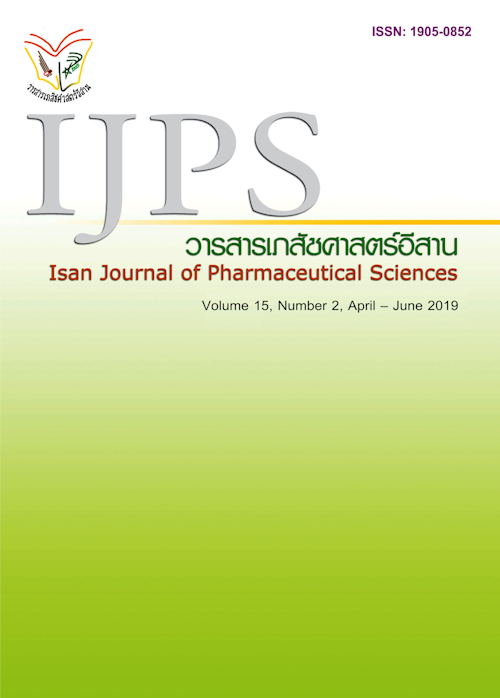The Study of Hawking Health Products: A Case Study at The King Cobra Village in Khon Kaen Province
Main Article Content
Abstract
The purposes of this research were to examine the hawking behavior for health products at the King cobra village in Khon Kaen province. This research was conducted in the qualitative design; the data was collected by documentary review participant observation and in-depth interviews and analyzed by triangulation and content analysis. There were two fields for data collection in this study; the first one was the way or area of the hawking where the researcher involved in the activity and the second one was the village of the hawker. The data collection was managed for 12 months from 1st of October 2016 to 30th of September 2017.
The findings revealed the hawking behavior that exotic animals especially the king cobras have usually been brought to draw the consumer attention before presenting their particular properties of a health product. In addition, hawkers persuade buyers to try on free their products: medicine food and cosmetics that they produced themselves and bought it for sale. The behaviors were divided into the 3 types as follows; 1) Hawking at the village. 2) Hawking at the flea market/product exhibition. 3) Hawking at the King cobra national association in Ban Khok Sa-nga .
Hawking health products at the King cobra village was considered illegal according to Medicine Act B.E. 2510, Food Act B.E. 2522, Wild Animal Reservation and Protection Act B.E. 2535, and Cosmetic Product Act B.E. 2558. However, health products hawking is still popular and is inherited to next generation. Therefore, in order to purchasers to be safe, they should have a healthy product development process to pass the good manufacturing practice. Moreover, they are encouraged the development of legitimate marketing promotion.
Article Details
In the case that some parts are used by others The author must Confirm that obtaining permission to use some of the original authors. And must attach evidence That the permission has been included
References
American Society of Health – System Pharmacists. AHFS Drug Information. Bethesda: American Society of Health – System Pharmacists,Inc.; 2009.
Kanjanasilp J, Preechagoon Y, Kaewvichit and Richards RME. Population Pharmacokinetics of Phenytoin in Thai Epileptic Patients. CMU. Journal. 2005;4(3): 287 – 297.
Nakariyakul K. Reason and Physician's Response of Therapeutic Antiepileptic Drugs Monitoring in Ambulatory Care Service. Thai Journal of Hospital Pharmacy. 2009;19:S 18 – 25.
Pacharavanich N, Sripa S, Sitthikraipong N, Duangpila P, and PanduangP. Therapeutic Drug Monitoring: The Need, Obstacles and Problem on setting up the Service in view of Hospital Administrators, Physicians and Pharmacists in the North East. Journal of UbonRajathanee University. 2004;2: 77-92.
Paschoa O.E.D, Voskuyl R.A., and Danhof M. Modelling of the pharmacodynamic interaction between phenytoin and sodium valproate. British Journal of Pharmacology. 1998;125: 1610 – 1616.
Pirovano A, Huijbregts M A.J., Ragas A M.J., and Hendriks. Compound Lipophilicity as a Descriptor to Predict Binding Affinity (1/Km) in Mammals. Environmental Science & Technology. 2012;46: 5168 – 5174.
Suwanmanee J.PharmacokineticParametersofValproic acidMonotherapyinPediatric Patientswith Epilepsy: EstimationfromTotal, and UnboundSerum Concentrations. 2002.
Vozeh S, Muir KT, Sheiner LB, and Follath F. Predicting Individual Phenytoin Dosage. Journal of Pharmacokinetics and Biopharmaceutics. 1981;9(2): 131 – 146.

